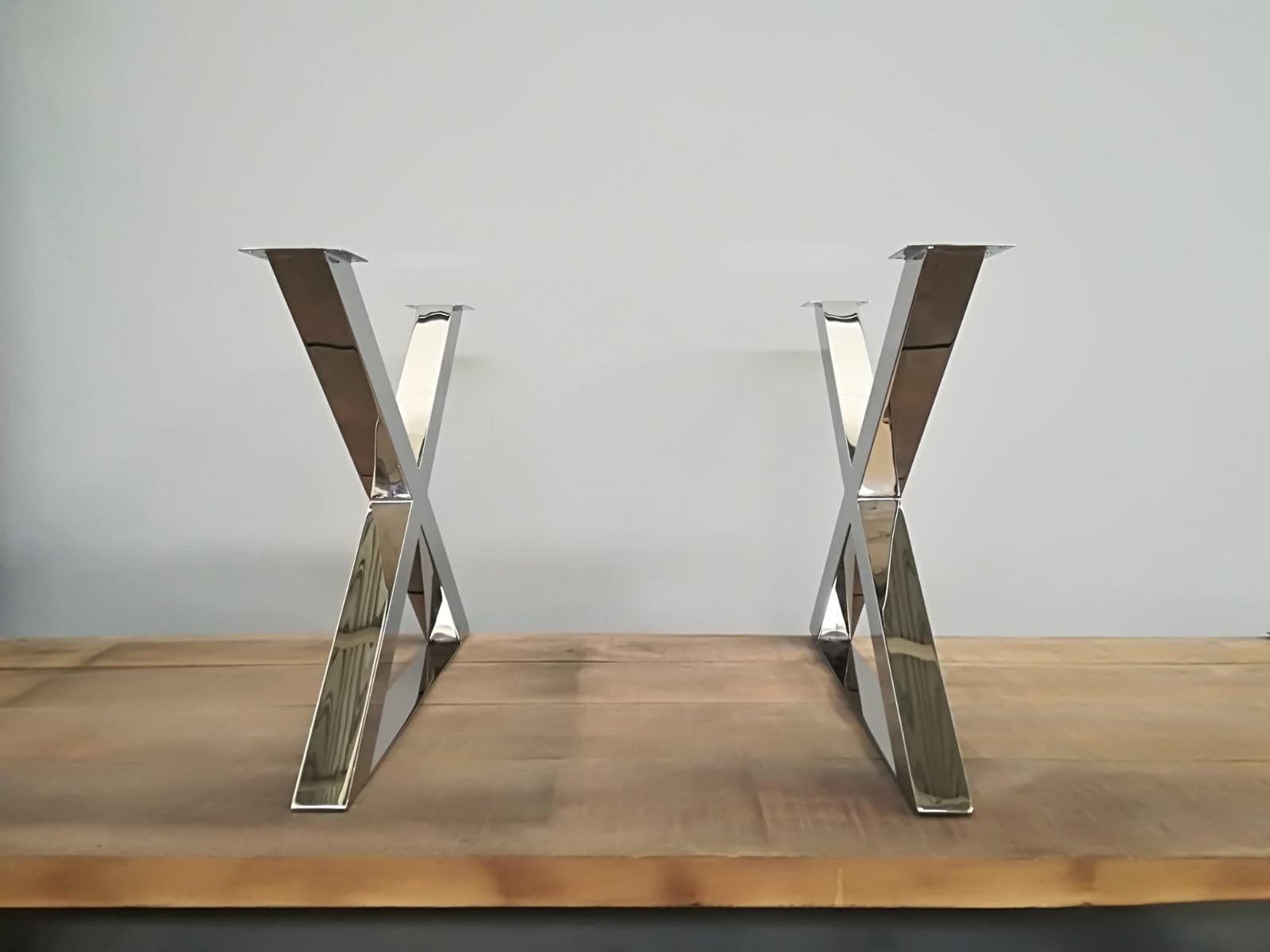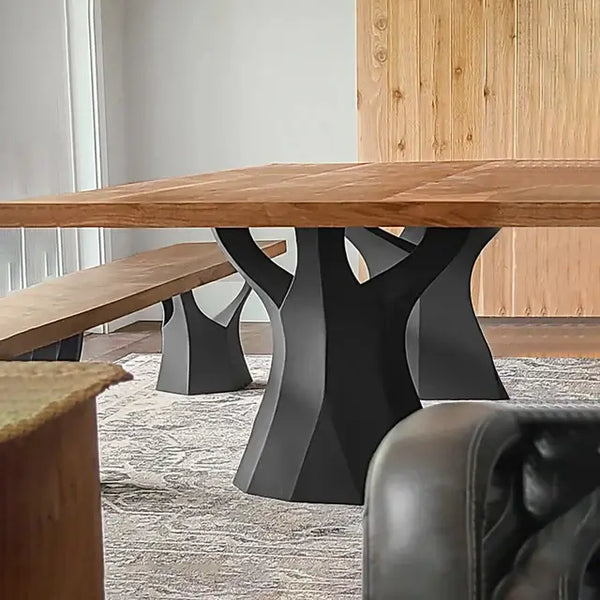The Impact of Dining Room Table Legs on Your Table's Overall Design
The Impact of Dining Room Table Legs on Your Table's Overall Design
Blog Article
From Standard to Modern: Locate the Perfect Dining-room Table Legs for Your Design
While traditional layouts such as cabriole and turned legs evoke a feeling of timeless class, contemporary designs like hairpin and geometric choices offer an opportunity for striking aesthetic rate of interest. As you consider these components, the inquiry stays: just how can you effortlessly integrate these varied leg styles to create a harmonious eating experience?
Comprehending Table Leg Styles
The variety of dining space table leg designs can considerably influence both the aesthetics and performance of the space. Each leg design adds unique visual components and sensible features, satisfying varied design preferences and use requirements. Comprehending these designs is critical for picking the ideal dining table that lines up with your general indoor design vision.
For example, tapered legs use a tidy, timeless appearance that can improve a space's beauty, while pedestal bases offer stability and take full advantage of legroom, making them optimal for smaller sized rooms. Hairpin legs, a characteristic of mid-century modern style, present an industrial flair, permitting for a ventilated, open feel. In a similar way, trestle legs evoke rustic appeal, providing robust assistance and a feeling of timelessness.
Furthermore, the choice of products plays a considerable role. Wood legs can bring warmth and texture, whereas steel options often convey a sleek, contemporary ambiance. Eventually, understanding table leg styles is crucial for creating a cohesive dining area that reflects individual design while making certain usefulness and comfort. By thoughtfully taking into consideration these aspects, you can improve both the visual and practical charm of your eating space.
Conventional Table Leg Options
When picking dining area table legs, standard choices frequently symbolize classic sophistication and craftsmanship. These styles reflect a rich heritage and a dedication to quality, making them excellent for those who value traditional looks.
One of the most iconic conventional leg designs is the cabriole leg, identified by its elegant bent form. This layout commonly features attractive carvings and is most typically located in Queen Anne and Chippendale furniture. An additional popular alternative is the turned leg, which flaunts a series of smooth, rounded shapes that give a classic appearance while keeping stability.
In addition, the straight leg, while simple, supplies a unadorned and tough framework that can blend seamlessly with a variety of tabletop styles. For those drawn to ornate detailing, claw-and-ball feet legs stimulate a feeling of majesty and can offer as a sensational centerpiece in any type of dining room.
Lastly, stand bases, although not strictly legs, give an alternate typical alternative that permits sufficient legroom and can be wonderfully sculpted. Each Home Page of these traditional leg styles adds to the total ambiance of a dining-room, weding function with aesthetic appeal.

Modern Table Leg Styles
Modern table leg designs use a varied range of designs that emphasize innovative products and clean lines. These layouts frequently prioritize capability while acting as striking focal points within a dining area. Minimal visual appeals prevail, with legs crafted from products such as metal, glass, and crafted timber, which add to a ventilated and contemporary feeling.
One popular layout is the hairpin leg, identified by its slender, conical structure that offers stability without overwhelming the tabletop (dining room table legs). This style is commonly found in mid-century modern furnishings and can easily enhance numerous my site eating table forms. One more pattern is using geometric shapes, where legs may take on unbalanced or angular kinds, including aesthetic interest and a touch of virtuosity

Mixing Styles for Distinct Areas
Frequently, home owners look for to develop distinct dining rooms that mirror their personal design by blending numerous layout components. This strategy enables the unification of varied appearances, leading to a harmonious yet distinct atmosphere. Coupling a rustic wooden table with sleek, modern-day metal legs can create an eye-catching comparison that elevates the area's general appeal.
Furthermore, integrating vintage table legs with modern tabletops can stimulate a sense of background while preserving a modern perceptiveness. Such combinations not only display private preference however also motivate creativity, enabling homeowners to curate an area that feels both personal and welcoming.
Color plays a critical role in this mixing process; choosing table legs that enhance or contrast with the existing color pattern can improve aesthetic rate of interest. Whitewashed legs can soften the boldness of a dark table surface, producing a well balanced aesthetic.
Tips for Selecting the Right Legs
Picking the right table legs is important for attaining both functionality and aesthetic charm in your eating space. Begin by thinking about the general design of your room. Conventional setups profit from legs that include intricate carvings or transformed layouts, while modern spaces might require smooth, minimalist styles.
Following, assess the height and security of the legs. dining room table legs. Typical dining tables range between 28 to 30 inches in height, so make sure the legs enhance this dimension for comfort. Additionally, robust materials, such as hardwood or metal, can improve stability and durability
Examine the leg form also-- choices consist of directly, tapered, or stand styles. Straight legs use a timeless appearance, while conical legs can include a touch of style. Pedestal bases give enough legroom and are ideal for smaller rooms.
Conclusion
In recap, choosing the ideal eating space table legs requires mindful consideration of both traditional and modern-day designs. By harmonizing leg design, height, and product with the general décor, a natural and inviting environment can be achieved.
The variety of dining space table her explanation leg designs can significantly affect both the aesthetic appeals and performance of the space. Eventually, understanding table leg designs is necessary for developing a cohesive eating location that mirrors personal style while making certain functionality and convenience.One of the most legendary typical leg designs is the cabriole leg, defined by its stylish rounded form. Straight legs provide a timeless look, while conical legs can add a touch of sophistication.In recap, selecting the excellent dining space table legs calls for careful factor to consider of both traditional and contemporary styles.
Report this page